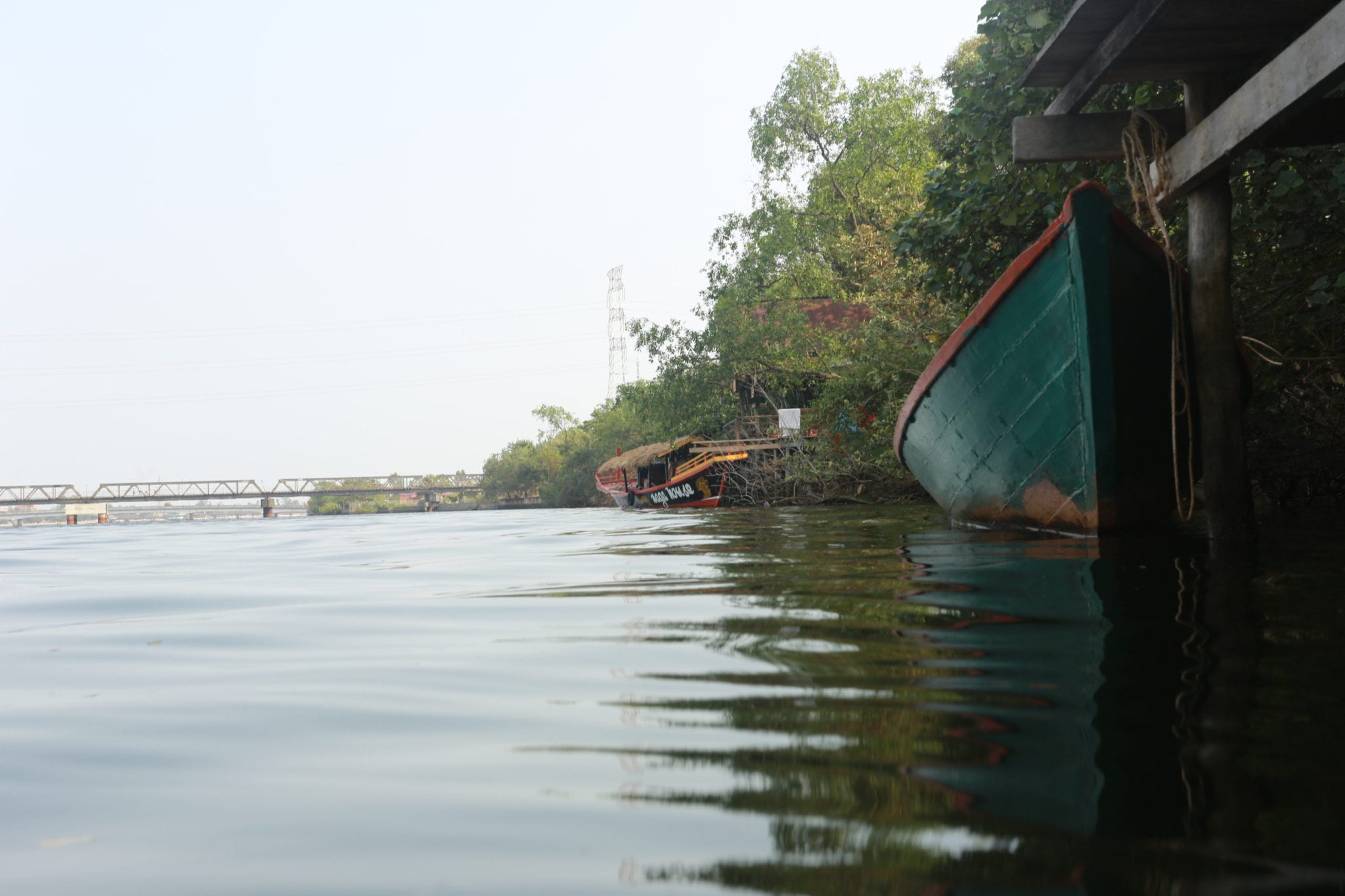My head is overflowing with images from our morning.
Children, 3 and 4 years old, squatting in the dirt to play with stones. A man in a white shirt and dusty pants walking out across the salt pans. Laundry hung from the tops of the stick fences and left to dry. Four young children in spotless school uniforms crowded onto a motorbike driven by a middle-aged man. Women seeking refuge in the shade under their stilted homes, rocking hammocks containing their babies. A herd of water buffalo wallowing in a pond, some submerged to the tips of their nostrils, leaving only their snouts, eyes and horns visible above the muck. A toddler grinning at us from his spot on the back of his father’s moto.
We’re on day two in Kampot after spending two days exploring Phnom Penh’s changing streets, and with every smile from a local, I’m being reminded of why we loved Cambodia so much the last time we were here.
Kep and Kampot are two towns that were once far enough off the beaten backpacker path that, when we got off the bus in Kep two years ago, the other travelers looked at us like we were insane. The Lonely Planet describes the area as somewhere you go to ‘feel’ rather than ‘do’ and, for once, I think they got it spot on. There’s not a lot here; the temples and palaces of Phnom Penh seem like a distant memory. In Kampot, you spend your days reading, getting a feel for how the locals live and throwing yourself in the river to cool off – and that’s all perfectly fine with me. It’s clear, though, that the towns have found themselves in the centre of revived interest in this little corner of the country. Once-derelict palatial properties in Kep have been redone and now offer upmarket accommodation; where there was once one little stall at the Kep bus drop-off point, there are now a dozen or more; the restaurants along Kampot’s waterfront offer all kinds of Western food (much to our disappointment); new roads have been put in and statues have been erected along the river; backpackers actually know where we’re talking about when we mention the names of the towns. Clearly, our little secret is not so secret anymore. Fortunately, though, our return precedes the time when tourism might sap the life out of the towns; there’s still plenty of “authentic Cambodia” to be found here.
After a day of celebrating life by having some fantastic pepper crab in Kep’s crab market and then toasting my grandfather with several rum and Cokes, we moved on to celebrating Rich’s birthday by lighting our fingers on fire under the instruction of Jenny, the Khmer bartender at the guesthouse down the road.
There were some tender heads and bellies among the travelers at the guesthouse this morning, but Rich and I headed out on our motorbike for a meandering tour of the area.
Our detours took us out of the city and into some rural villages, where white people are still a novelty, and a white girl riding sidesaddle on a moto while holding a big honking lens is DEFINITELY a novelty. Shy smiles are followed with a ‘hello’, and I elicit giggles or looks of surprise when I answer each with my newly-acquired Khmer language skills (I’ve mastered a whopping two phrases: ‘good morning’, and ‘good afternoon’; ‘good evening’ is still way beyond me, since it involves sounds not often emitted from anything other than a broken lawnmower). Adults stare openly while they muster the courage to wave. When we stop to snap a few photos, young children come running forward, shouting “Hello! Hello!” and giggle as they are photographed. A near-toothless grandmother tells her grandson to bring us to her; there’s another child across the street who didn’t get his photo taken. She leans in to see the results, nodding her approval.
There’s something about being on these rust-coloured dirt tracks that puts me at peace with life. Seeing these people living so happily in what most Westerners would consider to be abject poverty gives me reason to pause and think that maybe they’ve got the right idea over here.
Tomorrow, we head for Sihanoukville, where we catch a boat to Ko Rong Samloem, an electricity-free, white-sanded, clear-watered bit of paradise, where we’ll fall completely off the grid for three days of quiet reflection. For now, though, I’m off to see Jenny for a Khmer lesson.
Grateful for: $6 moto hire, smiles, time spent with my Papa while he was well


